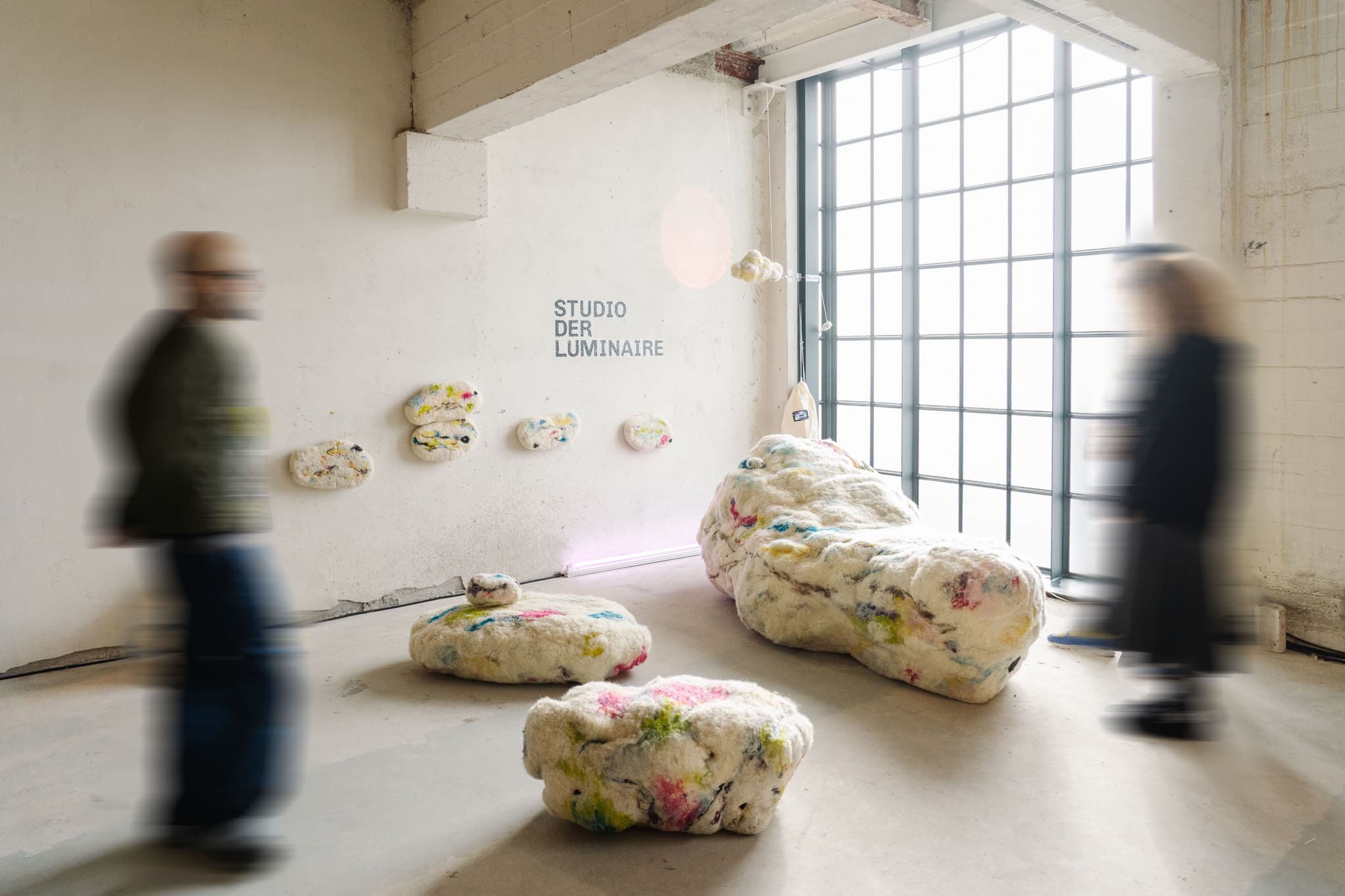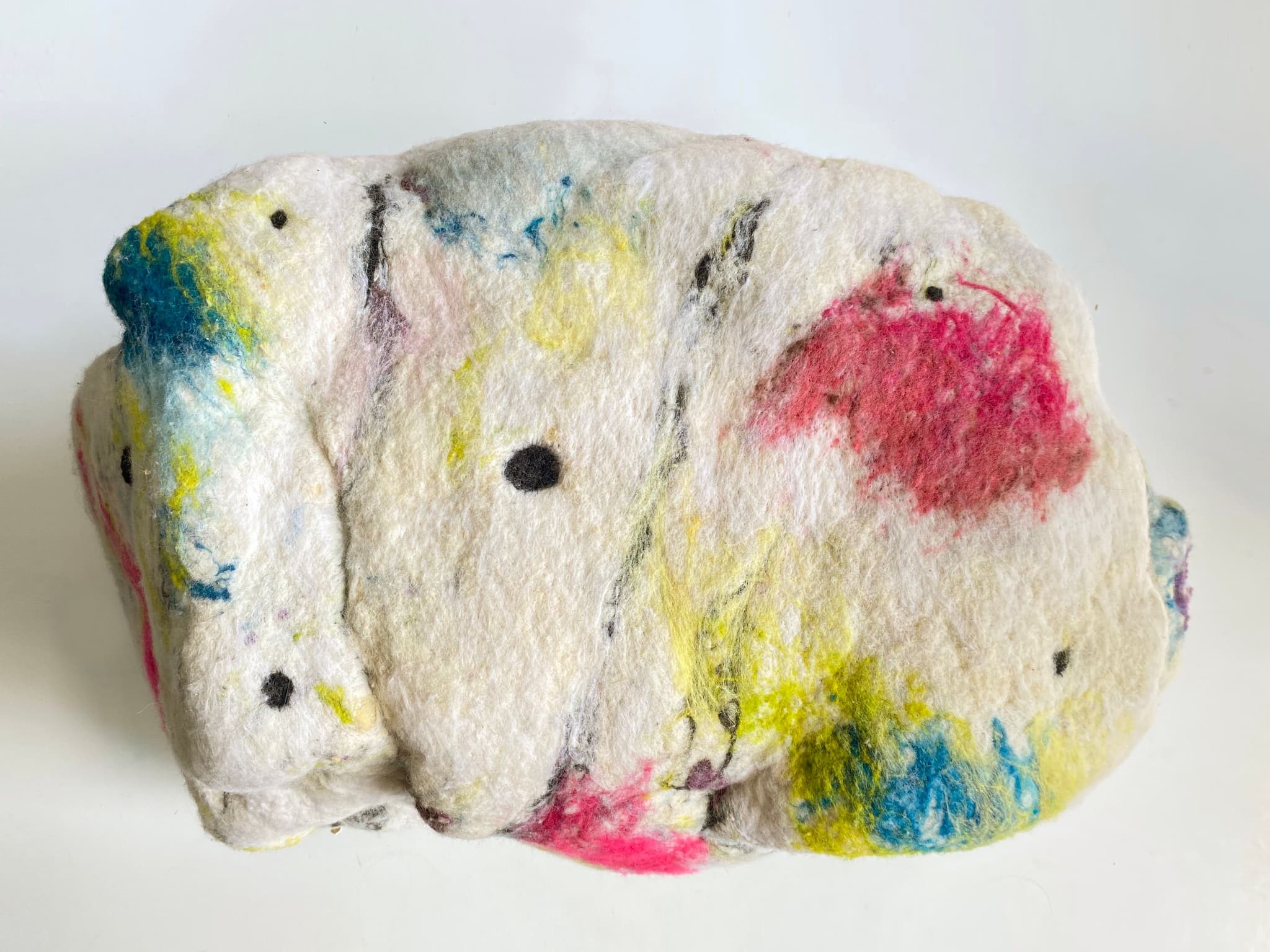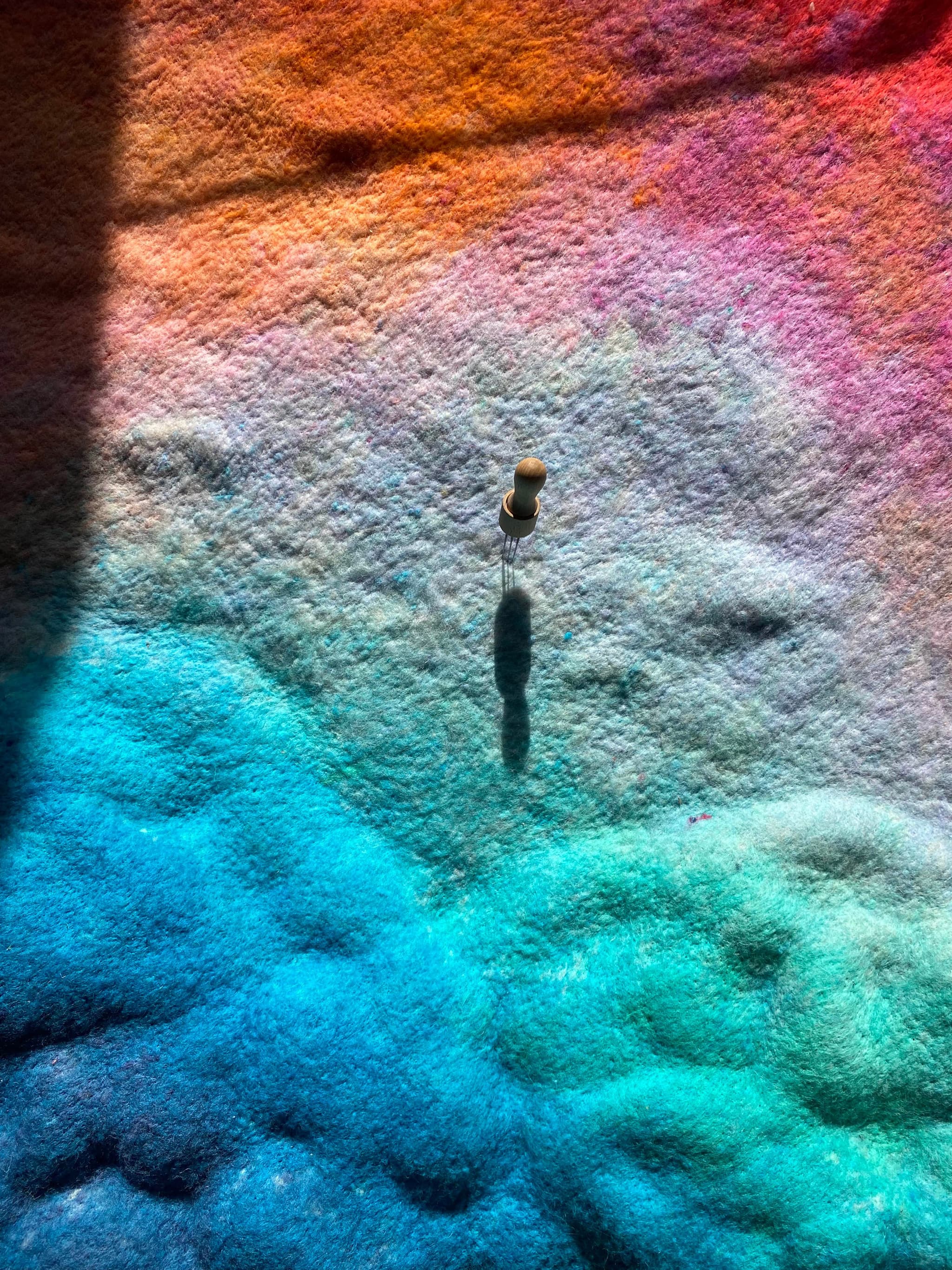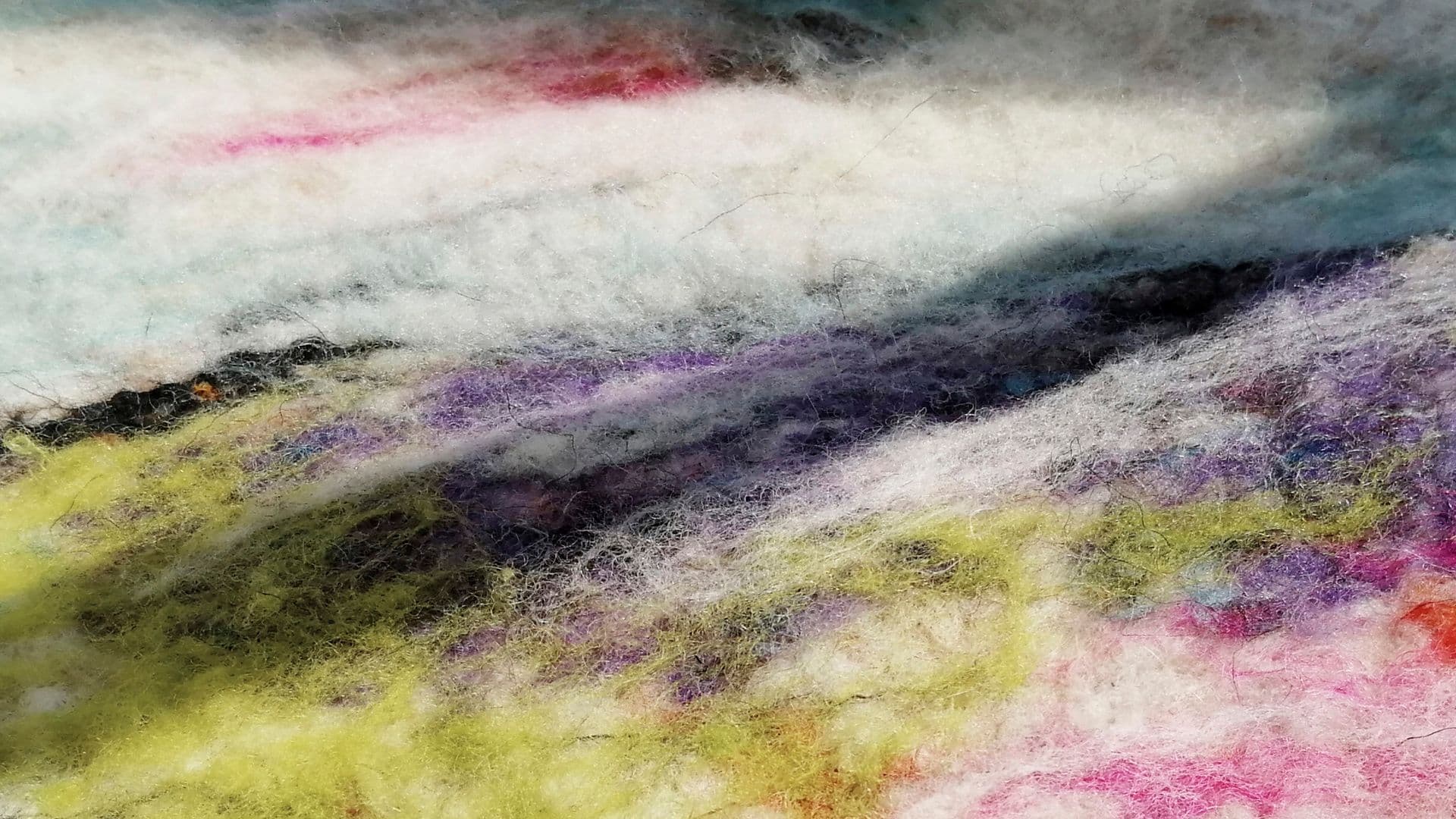1. What specific materials did you select for the construction of Playground 3000, and how do their properties contribute to the installation's intended tactile experience?
Playground 3000 was developed as a graduation project in 2023, partially inspired by the stressful and heavy circumstances of a final year at art academy. I wanted to bring more joy and playfulness into my production process—and to share that joy with anyone who interacted with the final work. At the time, I was also toying with a concept I termed the "Homo Lazy", where industrial advances drive massification of technology and efficiency. I remembered feeling truly playful as a child in the Peruvian landscape during summer. That memory sparked the decision to create something that played with contrasts—between hard and soft, challenging the monotony of a serious, digital society.
There is an excess of materials in the Netherlands, and I’ve always chosen to use sustainable, local material in my work. For this installation, I chose recycled foam and sheep wool, collected from farms and neighborhoods near where I live. Wool, in particular, is incredibly tactile and invites touch. But it’s the contrast between a rocky aesthetic and the soft material that makes the experience engaging. This contrast breaks expectations, inviting people to be more wild, more playful. It disrupts the unspoken codes of gallery interaction. How often do you see a sign saying, "Do not sit" on something that looks like a seat?

2. In developing the forms within Playground 3000, how did the chosen materials influence the design process, particularly in achieving the desired balance between softness and structural integrity?
The two core materials—foam and wool—were chosen early on due to their overabundance. Foam served as the main sculptural base, with wool layered on top. I explored many techniques at the beginning, but my goal was for the piece to feel whole—not like a structure covered with a shell. The solution was needle felting, which allowed wool and foam to fuse, making both components integral.
Finding the right balance was an ongoing challenge. Memory foam was wonderfully soft but didn’t felt well. Coarser wool had the best structural integrity but wasn’t as pleasant to touch. In retrospect, I don’t think Playground 3000 fully achieved the balance I was aiming for. The installation was more conceptual than structural. Later projects—like "Cloud Lamp", the ongoing "Woolographic" series, and our new commission for Het Nationale Theater—have all improved on the technique

3. Could you elaborate on any innovative techniques employed to manipulate or treat the materials used, ensuring both durability and the unique aesthetic of the installation?
Our use of needle felting on this scale was, in our opinion, the most innovative element of the installation. While other Dutch designers have worked sustainably with wool, we haven't seen needle felting used at this size or with this color treatment.
For Playground 3000, we dyed and carded the wool ourselves, which gave us more freedom in developing a playful color palette. This approach evolved further in the "Woolographic" series, where color manipulation became central.
4. How did considerations of sustainability and environmental impact inform your material choices for Playground 3000?
Sustainability has always guided my material choices. I moved to the Netherlands to deepen my knowledge of bio-materials like hemp and flax. For Playground 3000, the focus was on using surplus materials responsibly.
The Netherlands produces 1.5 million kilos of sheep wool annually, most of which is either burned or landfilled. Farmers now pay to dispose of their wool because it doesn’t meet fashion industry standards or public space durability. This wasteful cycle has shaped public perception, turning a rich, tactile material into a disregarded byproduct. Through this installation, I wanted to reclaim wool’s value and shift that perception.
Culturally, my partner and I also aimed to preserve traditional craft techniques. Needle felting is usually a hobby craft, used for small items. By scaling it up and modernizing its aesthetic potential, we hope to sustain the craft before its knowledge disappears.

5. Were there any challenges encountered in sourcing or working with the selected materials, and how were these addressed during the project's development?
Sourcing was actually very easy, since both materials are considered waste where we live. The difficulty came in treating the materials: cleaning, dyeing, carding, and improving durability. Especially once we began experimenting with color gradients, labor increased significantly.
Currently, we’re working on increasing our capacity while staying true to our sustainable ethos. There’s a limit to how much recycled material we can process, but as demand grows, we hope to expand responsibly.
6. In what ways do the materials used in Playground 3000 interact with light and color, and how does this interplay enhance the overall sensory experience for participants?
The materials don’t interact with light in a literal way, but the colors were designed to evoke light. I was inspired by the reflections on clouds, rainbow gradients, and how light filters through trees. All of this was intended to enhance the installation’s dreamlike quality, creating a space that feels immersive and emotionally playful.

7. How does the material composition of Playground 3000 facilitate or encourage specific forms of interaction or engagement from visitors?
We wanted participants to engage in a way that felt playful, dreamy, and imaginative. The softness and fluffiness of the materials trigger childhood associations—stuffed animals, oversized sweaters from a visiting aunt, lying in grass and watching clouds. The colors and textures are designed to reconnect people to a sense of tactile nostalgia.

8. What strategies were implemented to ensure the longevity and maintenance of the materials used in Playground 3000, considering its interactive nature?
Since Playground 3000 was an artistic prototype, it wasn’t meant to be a final, fully durable product. I tested it during graduation with hundreds of visitors. That real-time engagement showed me the material limitations—especially with rough interaction. Kids, for instance, loved pulling wool out of the forms.
We’re now developing a new technique combining needle felting with a binding agent. We’re also prototyping patterns so the wool can act more like a sweater, removable and washable, which improves maintenance.

9. Looking ahead, how might the material innovations explored in Playground 3000 influence future projects or inform broader trends in interactive installation design?
We’re not specifically focused on installation design, but we’re very aware of the social and sensory experiences our work creates. Playground 3000 doesn’t lead design trends—it responds to them. There’s already a move towards bio-materials, multi-sensory immersion, and user-centered interaction in the Netherlands.
People today are hungry for escapism through materiality—whether in installations, fashion, or interior design. Our work tries to offer that: a space to feel, to touch, and to drift into something whimsical.








